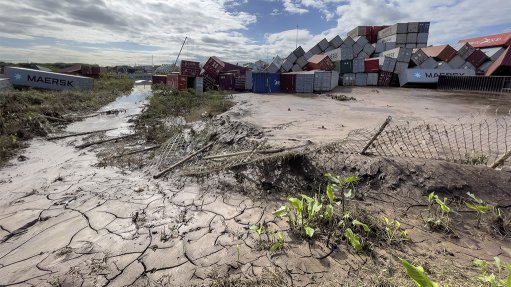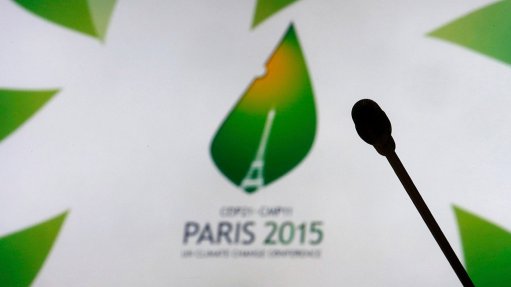Reflections on the next HS
Of the three cornerstones in the movement of goods – be they in their final, semi-processed or component forms – across a national border, which is the one for which you need to have access to information any time, day or night, Sundays and holidays included?
To answer this question, you need to know, or be reminded of, what the three cornerstones are. The cornerstones are the tariff classification – what it is; the origin – where it is from; and the customs valuation – what its price is.
For the last two, you do not need real-time information, as the provisions and stipulations are contained in the trade agreements and the trade preferences.
As a consequence, you can do your calculation or assessment based on the nature of the goods.
What you need real-time information for is the classification of the goods – not only as a result of a possible change in the classification, but rather because the rate of customs or excise duty could have changed. It must be noted, however, that this is not the only reason, as the tariff classification is also linked to the application of additional duties, prohibitions and restrictions imposed on the goods.
If you are importing goods into South Africa, or the Southern African Customs Union – which is made up of South Africa and the BELN countries of Botswana, eSwatini, Lesotho and Namibia – you should have a saved favourite bookmark: Schedules to the Customs and Excise Act, 1964. This page, which is on the South African Revenue Service website, “contains Schedules 1 to 6, 8 and 10 of the Customs and Excise Act, 1964, [and] the electronic versions of these schedules were developed to provide stakeholders with easy access to the relevant duties and levies applicable to all goods imported into, manufactured locally in or exported from the republic”.
Schedule No 1, Part 1 (ordinary customs duties); Schedule No 1, Part 2A (specific excise duties on locally manufactured or on imported goods of the same class or kind); Schedule No 1, Part 2B (ad valorem excise duties on locally manufactured goods or on imported goods of the same class or kind); Schedule No 1, Part 3 (environmental levy); Schedule No 1, Part 3A (environmental Levy on plastic bags); Schedule No 1, Part 3B (environmental levy on electricity generated in the republic); Schedule No 1, Part 3C (environmental levy on electric filament lamps; Part 3D (environmental levy on carbon dioxide emissions of motor vehicles); Part 3E (environmental levy on tyres); Part 3F (environmental levy on carbon emissions); Part 5A (fuel levy); Part 5B (Road Accident Fund levy); Part 6 (export duty on scrap metal); Part 7 (Health Promotion Levy); Part 7A (levy on sugary beverages); Part 8 (ordinary levy); Schedule No 2 (anti-dumping, countervailing and safeguard duties on imported goods); Schedule No 3 (industrial rebates of customs duties); Schedule No 4 (general rebates of customs duties, fuel levy and environmental levy); Schedule No 5 (specific drawbacks and refunds of customs duties, fuel levy and environmental levy); Schedule No 6 (refunds and rebates of excise duties, fuel levy and environmental levy); Schedule No 8 (licences); and Schedule No 10 (agreements or protocols or other parts or provisions).
The World Customs Organisation (WCO) Harmonised Commodity Description and Coding System, or HS for short, is updated at five-year intervals and introduced on January 1 of that year. In the instalment of this column published on October 28, 2022, and titled ‘Preparing for HS2027’, the next iteration was in the title. This was one of three recent articles, the other two being ‘HS study participation’, published on October 21, 2022, and ‘HS exploratory study’, published on February 9.
Only the next will be HS2028, the second-ever six-year review; the last was introduced in the year 1996. Prior to that, there had been two that were introduced at four-year intervals.
Although January 1, 2028, sounds far off, the WCO on March 22 “successfully” concluded the seventy-third session of its Harmonised System Committee. If you are not aware of the items under discussion, you should take the time to familiarise yourself with them.
Comments
Press Office
Announcements
What's On
Subscribe to improve your user experience...
Option 1 (equivalent of R125 a month):
Receive a weekly copy of Creamer Media's Engineering News & Mining Weekly magazine
(print copy for those in South Africa and e-magazine for those outside of South Africa)
Receive daily email newsletters
Access to full search results
Access archive of magazine back copies
Access to Projects in Progress
Access to ONE Research Report of your choice in PDF format
Option 2 (equivalent of R375 a month):
All benefits from Option 1
PLUS
Access to Creamer Media's Research Channel Africa for ALL Research Reports, in PDF format, on various industrial and mining sectors
including Electricity; Water; Energy Transition; Hydrogen; Roads, Rail and Ports; Coal; Gold; Platinum; Battery Metals; etc.
Already a subscriber?
Forgotten your password?
Receive weekly copy of Creamer Media's Engineering News & Mining Weekly magazine (print copy for those in South Africa and e-magazine for those outside of South Africa)
➕
Recieve daily email newsletters
➕
Access to full search results
➕
Access archive of magazine back copies
➕
Access to Projects in Progress
➕
Access to ONE Research Report of your choice in PDF format
RESEARCH CHANNEL AFRICA
R4500 (equivalent of R375 a month)
SUBSCRIBEAll benefits from Option 1
➕
Access to Creamer Media's Research Channel Africa for ALL Research Reports on various industrial and mining sectors, in PDF format, including on:
Electricity
➕
Water
➕
Energy Transition
➕
Hydrogen
➕
Roads, Rail and Ports
➕
Coal
➕
Gold
➕
Platinum
➕
Battery Metals
➕
etc.
Receive all benefits from Option 1 or Option 2 delivered to numerous people at your company
➕
Multiple User names and Passwords for simultaneous log-ins
➕
Intranet integration access to all in your organisation


















